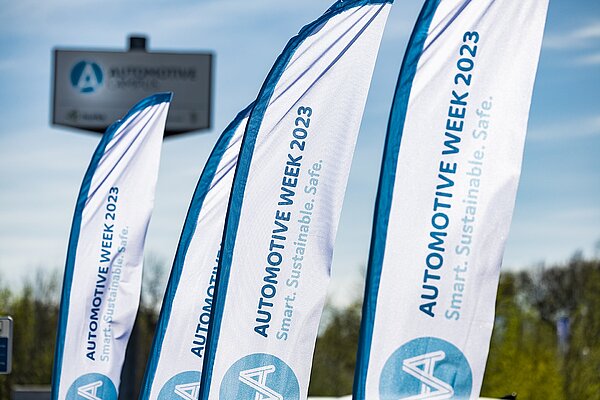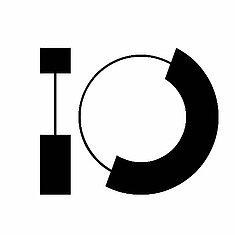A passport to serve the battery circular economy

This article is written by Innovation Origins as part of a series about the Automotive Week 2023 that took place from April 16th to 19th at the Automotive Campus in Helmond.
With the goal of ensuring the safety and sustainability of batteries in the EU market throughout their lifecycle, the European Commission has designed a new Battery Regulation. As a first result of this regulation, a year from now, the carbon footprint of every manufacturing site must be third-party verified and publicly accessible online. But that’s just the start of a bigger process. The main eye-catcher is the battery passport: by 2026, all EVs and industrial batteries in the EU market require such a document. Every battery will get a QR code on which information is gathered on its carbon impact, electrochemical performance, and durability classification.
One of the final sessions during the 2023 Automotive Week was all about the impact of the new EU Battery Regulations. The passport, methods of assembly, and recycling options were part of the discussion.
The Panelists:
Janet Kes (Manager Batteries & Quality Assurance, Auto Recycling Nederland)
Henk Jan Bergveld (Fellow/Senior Director NXP, part-time professor TU/e)
René Vounckx (CTO, VDL Nedcar)
Steven Wilkins (Senior Research Scientist, TNO, Assistant Professor, TU/e)
Although most stakeholders understand the need for regulation and documentation, there’s also some hesitance about whether the underlying goals would be reached with a passport and about its credibility. For all those people, TNO’s Steven Wilkins had good news. “TNO and others have been working on blockchain and smart contracting approaches for common open data and algorithms, and test methods to verify the parameters, so we can trust what’s in the passport.” These parameters will affect the financial value of the battery pack, Wilkins assures.

The whole value range
The parameters will cover the whole value range of a battery pack: they are about aspects like capacity, power, efficiency, cooling demand, discharging rates, and electrochemical impedance. Also, the passport keeps track of manufacturing dates, energy throughput, and capacity throughput. The company that puts it on the market is responsible for the battery's whole lifetime. “This will require coordination between cell producers, module producers, battery producers, automotive OEMs, and battery service, refurbishing, and repurposing companies.”
This means that every battery will be tracked from the cradle to the grave, NXP’s Henk Jan Bergveld adds. “The purpose of all this is to ensure and enable recycling and the reuse of scarce materials. It also means that the passport must be renewed when the battery transfers from its first-life application to its next life.” This comes with a bunch of challenges. “To name a few, consider that a battery management system consists of many parts, with its intelligence and storage sometimes at different locations. Also, there are security issues around confidentiality, authorization, authentication, and tamper-resistance. Finally, reusing a battery in new circumstances can be a real burden.”
Within The Netherlands, VDL aims to become the low-volume, high-complexity market leader in batteries. René Vounckx explains that VDL’s first steps in the battery space are the ideal foundation for such an ambition. The following steps will include building a state-of-the-art technology, expanding the expertise, and gaining a strong reputation as a battery assembly stakeholder. “To get there, a dedicated hall for battery projects will be operational at VDL Nedcar in Born. From there, we will start more projects offering additional opportunities to further develop our expertise.” Design for dismantling and automatic recycling will be part of that effort, Vounckx adds. “Our innovation qualities are needed more than ever in the next five years.”
Environment and economy
The battery passport will help reach the ideal situation, Vounckx expects.
“For the first time, we will have a circular economy legislation that covers the entire life cycle of a product - this approach is good for both the environment and the economy. The measures will greatly benefit consumers: batteries will be well-functioning, safer, and easier to remove. The overall aim is to build a stronger EU recycling industry, particularly for lithium, which is crucial in the coming decades for our energy transition and strategic autonomy. These measures could become a benchmark for the entire global battery market."


Auto Recycling Nederland has been responsible for car recycling for many years. From now on, the organization will also cover battery recycling. “And the battery passport will be our guiding principle”, says Janet Kes. And although the passport is not yet there, Kes has already prepared the recycling targets for 2027. By then, 90% of cobalt, copper, nickel, lead, and 50% of all lithium must be recovered. “Urban mining is not yet a substitute for import, but it does feel like an additional source for critical materials.”
Ket also sees challenges:
“The producer's responsibility for remanufacturing, repair, and second use will lead to new and fierce debates. If you repair it, you are the new responsible party. This will affect the attitude of all stakeholders in the battery value chain.”
